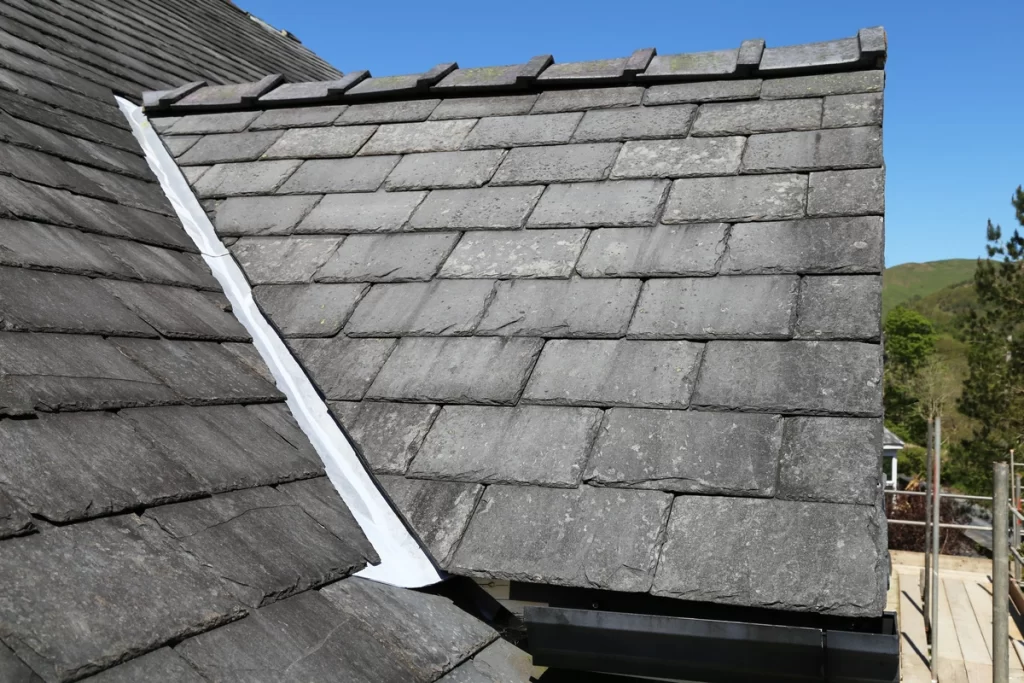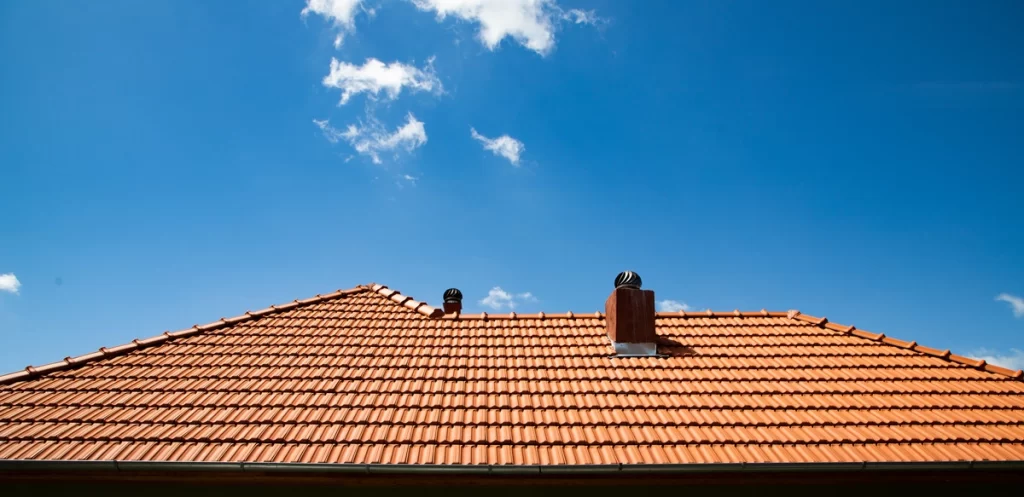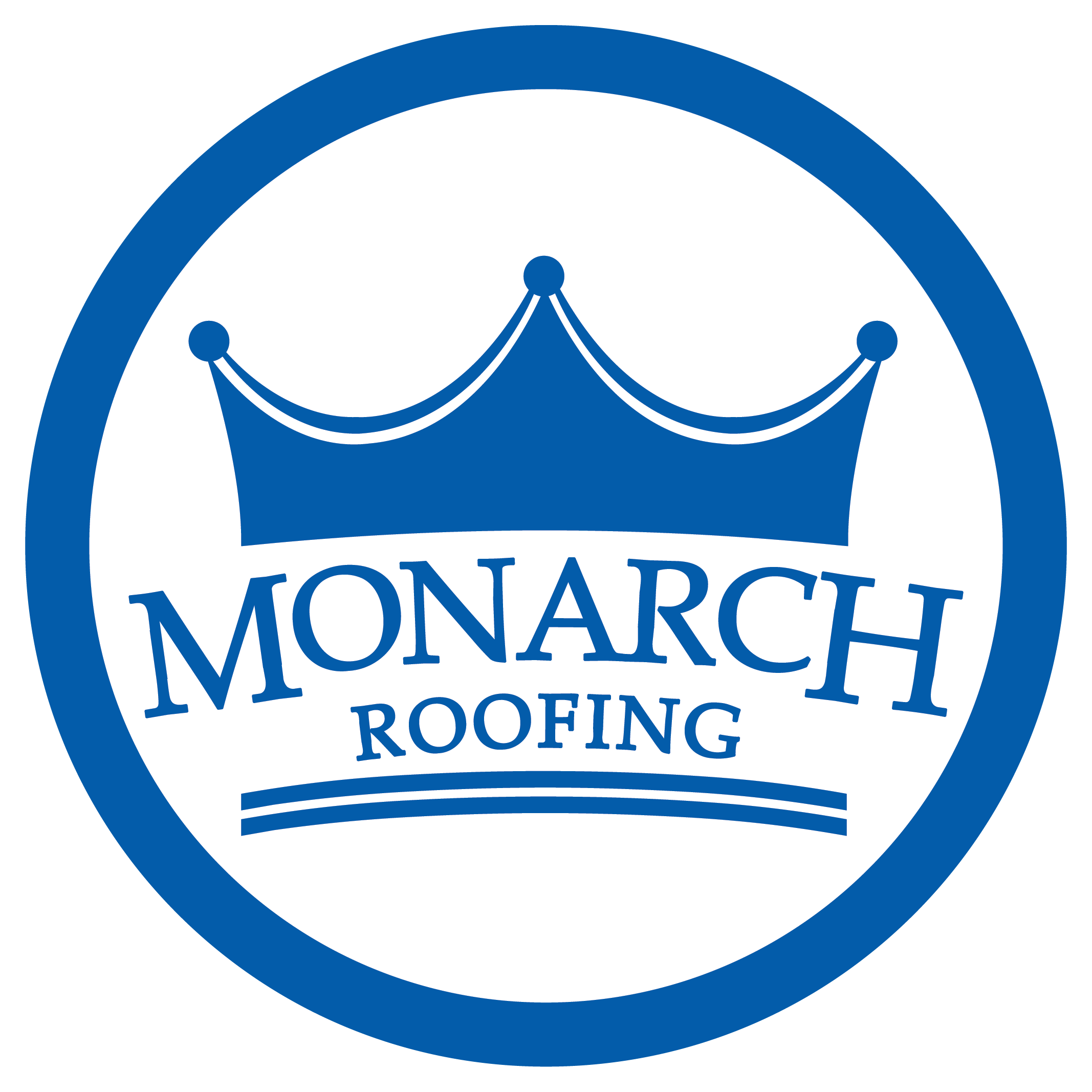Choosing the right roofing material is a crucial decision for homeowners, as it not only affects the aesthetics of the house but also its durability and maintenance requirements. Among the myriad of options available, slate and tile roofing stand out as popular choices due to their durability, longevity, and classic appeal. But when it comes to a slate vs. tile roof, how do you choose the right one for you?
We’re here to help with a detailed guide, that breaks down:
- The differences between slate andtile roofing
- Their pros and cons
- Cost considerations
- Maintenance requirements
- Longevity
By the end, you’ll have a clearer understanding of which option best suits your needs and preferences.
Signs That You Need to Replace Your Roof
Before delving into the specifics of slate and tile roofing, it’s essential to recognize the signs that indicate your roof may need replacement. Some common indicators include:
- Age: Most roofs have a lifespan of 20 to 30 years. If your roof is nearing or has surpassed this age range, it may be time for a replacement.
- Leaks: Water stains on ceilings or walls, as well as mold or mildew growth, signify potential roof leaks.
- Missing or Damaged Shingles: Shingles that are cracked, curling, or missing altogether compromise the integrity of the roof.
- Sagging: A sagging roof may indicate structural issues that require immediate attention.
- Increased Energy Bills: Poor insulation due to roof damage can lead to higher heating and cooling costs.
- Granule Loss: Granules from asphalt shingles accumulating in gutters or on the ground may signal shingle deterioration.
If you notice any of these signs, it’s advisable to consult a roofing professional for an inspection and potential replacement.
Pros and Cons of Slate Roofing

Slate roofing offers a timeless elegance and exceptional durability, making it a sought-after choice for homeowners seeking a long-lasting and visually appealing option. Here are some of the pros and cons of slate roofing:
👍 Pros:
- Longevity: Slate roofs can last 100 years or more when properly maintained, making them a durable and long-term investment.
- Aesthetics: Slate roofing provides a classic, upscale appearance that enhances the curb appeal and value of any home.
- Fire Resistance: Slate is a naturally fire-resistant material, providing added safety and peace of mind.
- Low Maintenance: Slate requires minimal maintenance compared to other roofing materials, saving homeowners time and money in the long run.
- Environmentally Friendly: Slate is a natural material that can be recycled at the end of its lifespan, reducing environmental impact.
👎 Cons:
- Cost: Slate roofing is one of the most expensive roofing options due to its high-quality materials and labor-intensive installation process.
- Weight: Slate is significantly heavier than other roofing materials, requiring a structurally sound roof frame to support its weight.
- Fragility: While durable, slate can crack or break if walked on improperly, making maintenance or repairs challenging.
- Limited Color Options: Slate typically comes in natural hues such as gray, black, or green, limiting design flexibility compared to other materials.
- Installation Complexity: Installing slate roofing requires specialized skills and experience, leading to higher installation costs and longer project timelines.
Pros and Cons of Tile Roofing

Tile roofing, available in materials such as clay or concrete, offers a distinctive Mediterranean or Spanish aesthetic along with several practical benefits. Let’s explore its pros and cons:
👍 Pros:
- Durability: Tile roofs are highly durable and resistant to fire, rot, and insect damage, ensuring long-term performance and protection.
- Aesthetic Appeal: Tile roofing adds character and charm to any home with its distinctive style and variety of colors and profiles.
- Low Maintenance: Like slate, tile roofing requires minimal maintenance, saving homeowners time and effort over the lifespan of the roof.
- Energy Efficiency: The thermal mass of tile helps regulate indoor temperatures, reducing heating and cooling costs and enhancing energy efficiency.
- Longevity: With proper care, tile roofs can last 50 years or more, providing reliable protection and peace of mind for homeowners.
👎 Cons:
- Cost: While less expensive than slate, tile roofing is still a significant investment compared to other roofing materials due to material and installation costs.
- Weight: Like slate, tile is heavy and requires a sturdy roof structure to support its weight, potentially necessitating additional reinforcement.
- Fragility: While durable, individual tiles can crack or break if subjected to heavy impact, requiring periodic inspection and replacement.
- Installation Complexity: Installing tile roofing requires specialized skills and equipment, leading to higher installation costs and longer project timelines.
- Limited Climate Suitability: In regions prone to freezing temperatures, certain types of tile roofing may be susceptible to cracking or damage from frost heave.
Cost Comparison
When comparing the cost of slate and tile roofing, it’s essential to consider both material and installation expenses. While slate roofing tends to be more expensive upfront due to its premium materials and labor-intensive installation, tile roofing offers a more affordable alternative without sacrificing durability or aesthetic appeal. On average, the cost of slate roofing ranges from $600 to $1,500 per square (100 square feet), while tile roofing typically costs between $400 to $1,000 per square. However, prices may vary depending on factors such as roof size, complexity, and location.
Maintenance Comparison
Both slate and tile roofing require minimal maintenance compared to other roofing materials, thanks to their durability and natural resistance to elements. Routine maintenance tasks for slate and tile roofing may include:
- Inspecting for cracked or broken tiles or slates
- Clearing debris from gutters and valleys
- Checking for signs of leaks or water damage
- Trimming overhanging tree branches
While maintenance requirements are similar for both materials, it’s essential to handle repairs promptly to prevent minor issues from escalating into more significant problems.
Longevity
One of the most significant advantages of slate and tile roofing is their exceptional longevity. Slate roofs can last 100 years or more with proper care, while tile roofs can endure 50 years or more. By investing in a slate or tile roof, homeowners can enjoy peace of mind knowing that their roof will provide reliable protection for decades to come, potentially outlasting multiple generations.
How to Choose the Right One for You
When selecting between slate and tile roofing, several factors should be considered to ensure the best fit for your home and budget:
- Budget: Determine your budget for roofing materials and installation, keeping in mind long-term maintenance and repair costs.
- Aesthetic Preferences: Consider the architectural style of your home and personal aesthetic preferences when choosing between slate and tile roofing.
- Climate Considerations: Take into account your region’s climate and weather patterns, as certain roofing materials may perform better in specific environments.
- Structural Requirements: Assess the structural integrity of your roof frame to determine if it can support the weight of slate or tile roofing, or if reinforcement is necessary.
- Contractor Experience: Choose a reputable roofing contractor with experience installing slate or tile roofing to ensure proper installation and long-term performance.
Ultimately, whether you opt for the timeless elegance of slate or the Mediterranean charm of tile, investing in a high-quality roof will enhance the beauty, value, and durability of your home for years to come.
Premium Professional Installation
In the debate between slate and tile roofing, both options offer distinct advantages and considerations for homeowners. While slate boasts unparalleled longevity and classic aesthetics, tile provides a more affordable alternative with similar durability and visual appeal. By weighing the pros and cons of each material, considering factors such as cost, maintenance, and climate suitability, and consulting with a qualified roofing professional, you can make an informed decision that meets your needs and preferences.
Whether you choose slate or tile, investing in a high-quality roof is an investment in the long-term protection, beauty, and value of your home. Contact Monarch Roofing to schedule your roof replacement today!





